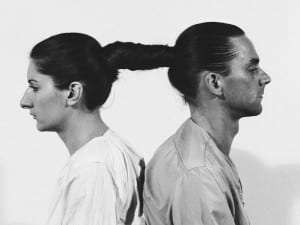All Consuming Images: The Politics of Style in Contemporary Culture (1988) was the title of a book written by Stuart Ewen, New York-based author and lecturer on consumer culture. However, it might have as well been the title of German painter and installation artist Franz Ackermann’s new exhibition at the White Cube in Bermondsey.
Ackermann’s three-dimensional panels comprising of cartographic watercolour drawings and black and white photographs reflect the bare bones of urbanisation as well as globalisation, and their rarely depicted effects on human societies as well as the stark disparity between the rich and the poor alongside the passage from the past to the present. The multi-media collage installation touches upon the deepest distresses of today to a distressing level.
In the backdrop, the exuberantly painted wall murals whisper the memory of a past age when trees grew untamed and the grass remained tall, while the colourful and subject-rich panels in the forefront engage the viewer in a state of confusion. The multitude of colours (literally every shade of every colour), the diversity of shapes and lines (shapes and lines you couldn’t draw even if you were on hallucinogenic drugs for a full month) constitute the all-consuming imagery of contemporary society.
From apartment blocks to old buildings and statues, from airplanes to air pollution, from indescribable faces to a network of lines and squiggles creating indirect connections between places, people, choices and objects, the 9x9x9 gallery of the White Cube is transformed into a maze of one’s psychological, emotive and irrational states. As one walks around the gallery space exhaling the visual stimuli of a contemporary chapel one notices a different element of existence in art; existing within and beside art. Ackermann turns his viewer into a segment of his installation and if there is such a thing as a psychologically challenging exhibition, this certainly is it. On another level, Ackermann’s exhibition begs the answer to the following question: “Can we worship contemporary art the way, say; we gawp at Renaissance art in Italian cathedrals, churches and chapels?”
While the multitude of colour and light reflected from the works is almost disturbing, the level of detail included in the works is unmatched by Ackermann’s previous works of similar chaos. He tells the story of contemporary people’s lives through cartoonish abstraction. As time passes each and every one of us by and we become ever-more removed from our natural habitat due to undying concern, lament-filled worry and ultimate loneliness amidst an age of technology, our mental states become clouded.
Seeing and living life for what it is becomes even more impossible in a state of blindness caused by our populous existence. Ackermann observes this state of bewilderment and puzzlement to a great extent; so much so that Ackermann’s vision of the world consumes us from within when we dare to stand in front of it. Everything is intertwined like tangled grapevines, the artistic mediums branch over each other and wrap around one another through colour and line. One finds oneself lost in the abyss of a particular panel, trying to understand the content and to carve it in one’s memory before stepping towards the next panel. As one takes that inevitable leap, one forgets the content of the previous panel. Ackermann is a master at playing tricks with the viewer’s mind.
Yet, I find myself wondering. If we really saw the world we live in through Ackermann’s eyes would we even be able to breathe in it? Is the human mind’s capacity to erase information and numb itself to stimuli when there is an excess of it, a gift or a curse? Ackermann’s work might scream fun and chaos for a good half hour but if our minds were as alert and as vibrant as Ackermann’s installation most of us would definitely not survive as long as we do, or as long as we think we do.
The Franz Ackermann exhibition will be on display until 13 April 2014 at the White Cube in Bermondsey. For more information visit www.whitecube.com.
Hande Eagle
Credits
1. Franz Ackermann 9x9x9 Gallery White Cube Bermondsey.





